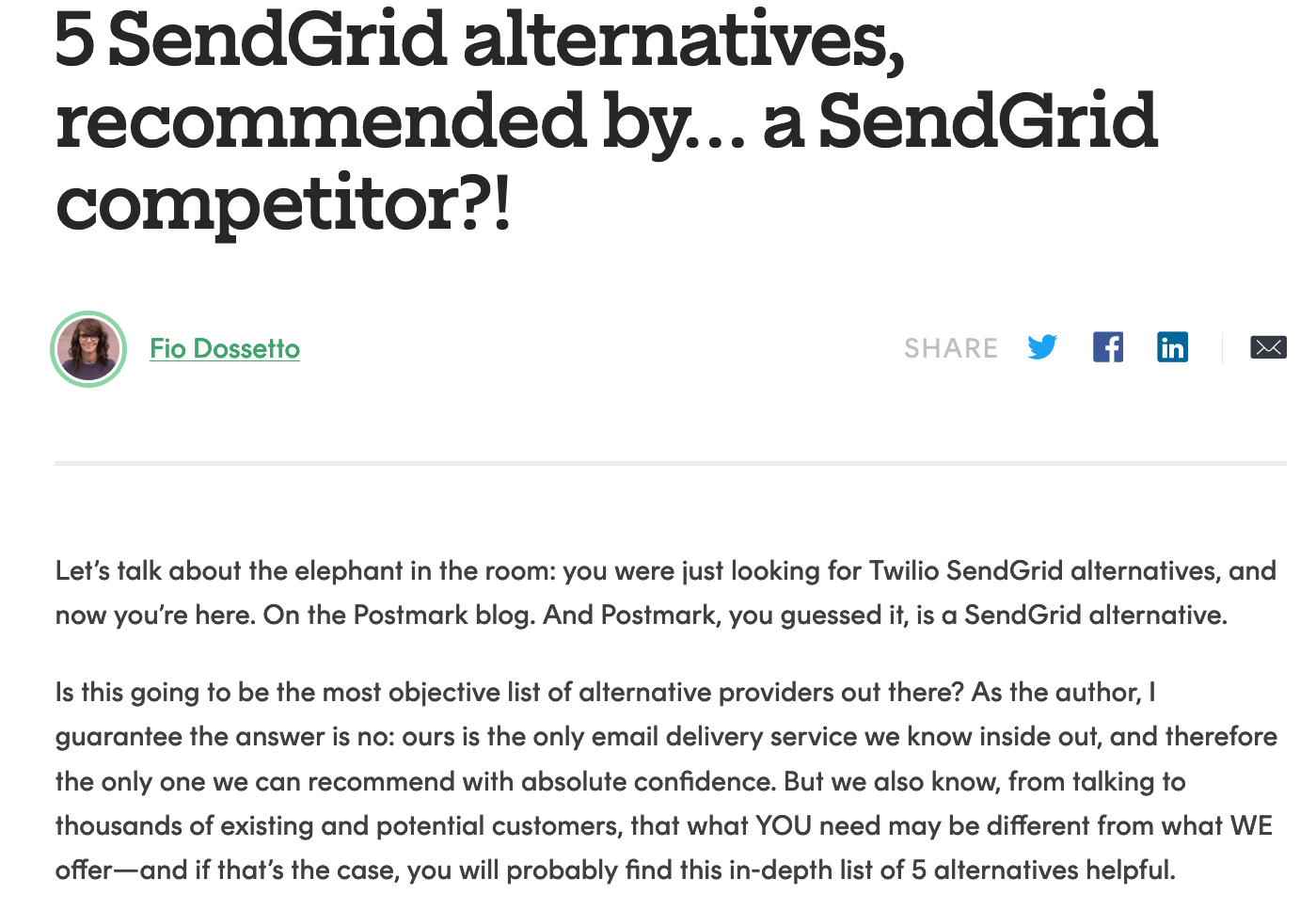
You are reading contentfolks—a fortnightly blend of sticky notes, big content ideas, and small practical examples. Thank you for being here! ~fio
Hey there 👋
Listicles and comparison pieces have been around for a while, and most of them look indistinguishable from each other—that’s because you can create them relatively quickly by replicating the same basic formula.
Most people will choose the path of least effort. If you’re willing to do a tiny bit of extra work, you might have a huge opportunity to make your brand stand out.
Did a human or a machine write this?
Your typical “X best [software category] in [year]” or “[this brand] vs. [that brand]” pieces tend to follow this structure pretty closely:
Introduction about the state of the industry/why a solution is needed
Brief summary of what the piece covers and how it’s going to help
Tips to help readers make an informed choice
List of tools with individual descriptions (usually lifted and slightly reworded from a product’s homepage)
There’s nothing wrong with this formula, per se—it serves the original reader intent well and is usually sufficient for a piece to rank and convert. But most content that follows this structure also looks like it was written by a machine.
In fact, quiz time: who wrote this?
In today’s digital landscape, visual collaboration tools play a vital role in enhancing teamwork and productivity. Making the right choice for your business can be a daunting task, which is why we’re here to simplify the process.
In this blog post, we will dive into a comprehensive comparison between Miro and its key competitors: Figma, Mural, Notion, and Clickup. We will explore various aspects such as features, user interface, integrations, pricing, and suitability for different use cases.
Whether you’re a design team looking for powerful prototyping capabilities, a remote team in need of seamless virtual whiteboarding, or an organization seeking a versatile all-in-one productivity tool, we’ve got you covered.
Human or machine? Does it matter? Human writers have been writing functional introductions like this one forever; AI-generating tools got trained on the existing corpus and replicated what they saw; with programmatic SEO, it’s become even faster and easier for anybody to publish thousands of variations on this format…1
…so if the barrier to entry is suddenly lower and most people can do the same things at scale, you need to think about where your unique differentiated value is going to come from.
My suggestion → find a unique spin for your introductions.
💡 A practical example💡
At some point in my Hotjar days, it became obvious that we had to start doing listicles and comparisons. Everybody else was doing them anyway, and we wanted to own a bit of that conversation on our site.
I wasn’t excited about the idea until my content partner Louis suggested that we take the format and have some fun with it. We decided that we’d come up with a unique spin for each introduction, turning it into something that would stand the f*ck out 2 in an ocean of listicles that looked like carbon copies of each other—even back then, in our pre-ChatGPT days.
For example, we would be gracious when talking about our biggest competitor:

Or, we would start by listing a bunch of assumptions about why people had landed on the page:

Sometimes we would even tell people their thought process was flawed:

Spending a little time finding unique spins was creatively rewarding, but it was also a smart way to position Hotjar as a brand that did things differently, took risks, and had a specific human touch. And of course, these listicles ranked and converted extremely well—we never forgot that our primary goal was to drive conversions. We just found the perfect balance between short-term business objectives and long-term brand wins 😉
Be a human talking to humans
Listicles and comparisons can be a fun and creative format to execute and read, especially when a brand lets you go wild with them (thank you, Postmark):
My point is simple: behind every reader of a B2B article there is a human who is trying to get a job done, wants to be understood, and hopes to get some help with it. Most companies forget about that—so there’s less competition (and more room for long-term differentiation) when you just remember to be human in return.
Give it a try?

FYI, that intro was written by ChatGPT based on this basic prompt:
Miro is a well-known visual collaboration app whose main competitors include Figma, Mural, Notion, and Clickup. You’re writing a blog post to compare Miro with these alternatives. Write an introduction that explains what you are about to do in this blog post and how you are going to help your readers. Do not start with a ‘welcome to our blog post’ line.
His words, not mine. Also, that’s literally the name of his current business venture!
